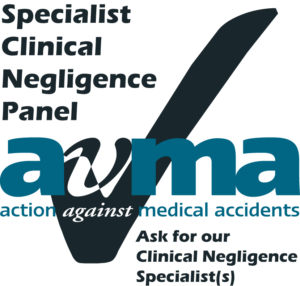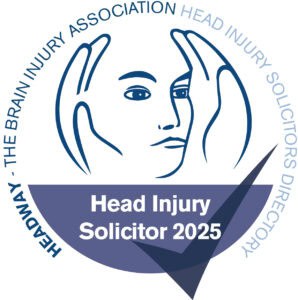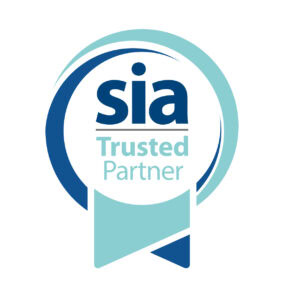
In this section of the accessible travel and spinal injury advice hub, we share our insight into booking and taking flights in a way that ensures all of your accessibility needs are met.
Click on the questions below to learn from our experience.

In this section of the accessible travel and spinal injury advice hub, we share our insight into booking and taking flights in a way that ensures all of your accessibility needs are met.
Click on the questions below to learn from our experience.
Most reputable airlines will have detailed information on their website for customers travelling in a wheelchair.
It’s important to check if they will allow you to fly on your own, or whether they insist someone travels with you. This policy can vary depending on the airline. They may also request specific information as to your medical needs before you fly.
However, it’s important to remember that there are three separate businesses you will interact with when flying.
These are:
In theory, all three organisations should seamlessly interact with each other. But, sadly, this is often not the case and communication between these parties can be lacking at times.
Therefore, you may wish to read about other people’s experiences prior to travelling on blogs and forums, to learn what difficulties they faced and to familiarise yourself with the common pitfalls.
Overall, if you are a manual wheelchair user, you should find travelling by plane relatively easy, provided you are patient and prepared to be clear as to the assistance you require. Most airlines and modern airports are well equipped to deal with you and, crucially, their staff will be familiar with the procedure.
If you are a tetraplegic, or use an electric wheelchair, you may find airlines less familiar with your specific needs.
If it’s at all possible for you to travel in a manual wheelchair to your destination, you may wish to consider doing so. However, if that is not an option, be sure to discuss your situation fully with the airline and wheelchair assistance company prior to travel.
You should consider the facilities for you onboard your aircraft.
Most wheelchair users find they cannot access the bathroom facilities. This could be because they cannot walk to the washrooms, because their chair does not fit down the aisle or is in the hold, or because the plane simply doesn’t have an adapted toilet.
You need to consider in advance how you will deal with this. Most people with a spinal cord injury will consider using an indwelling catheter with a leg bag to get around this issue.
You should choose a leg bag capable of holding as much volume as necessary. You should also have a plan in place for emptying the bag should it be a long-haul flight. If you are travelling with someone else, it is a good idea to consider whether you feel comfortable asking them to help with this.
You may also wish to consider carrying some of your medications in your hand luggage in case anything happens to your hold luggage.
Once you’ve booked your flight, you should always call the airline afterwards.
Some companies have tick boxes on their online booking forms, which enable you to categorise the level of assistance you’ll need when boarding the plane. However, it’s always a good idea just to call and confirm these have been noted and to explain any unique requirements you may have.
The airline will usually want to know what type of wheelchair you use, be it manual or battery powered. They’ll also require the dimensions (width, length and height), as well as the approximate weight of your wheelchair.
You’ll also be able to book assistance for travelling through the airport and boarding the plane. This comes in different forms, depending on your needs. Questions you’ll need to consider include:
Normally, aisle seats or any of the bulkhead and emergency exit rows are prohibited for reasons of health and safety. Most airlines will have certain seats onboard in which they prefer you to sit.
However, these preferences do vary between airlines, so don’t be surprised if there’s a disagreement between the cabin crew and wheelchair mobility staff during your embarkation. Equally, you may have personal seating preferences, for example, having someone sit with or nearby you.
It is generally advisable not to pay the extra cost of choosing your seat before you contact the airline to see where they wish you to sit, as they are likely to limit your choices.
Wherever you do sit, you may wish to enquire whether the arm of the chair can be raised up as this will probably assist with transfers when accessing the seats.
This will depend on the level of assistance you have requested in advance of travel. However, you should head to the check-in desk as normal and reiterate your needs to airline staff.
Check-in may take a little longer, as the airline will confirm you have been allocated the correct seat and check in your wheelchair along with any luggage. It is likely that you will be travelling in your own wheelchair and you should make this clear at the desk.
The airline will tag your wheelchair in the same way they do your luggage and provide you with a sticker for your ticket which corresponds to the tag on your wheelchair.
Ideally, the airline will also tag your chair with a small placard indicating that it should be brought from the hold to the plane door immediately upon arrival. If they do not do this, or if they are unable to do so, ensure they know this needs to occur.
You do not want to be sitting in a wheelchair that is not tailored to your needs any longer than necessary, as this can cause discomfort and/or skin breakdowns.
You can request assistance from the moment you have checked in, going all the way through security and up to the gate. Or, you may prefer to have assistance meet you at the gate just prior to boarding.
Your preference may depend on the size of the airport, as assistance can be beneficial if there are long connection tunnels between terminals or during peak seasons when the queues are long. This will have been booked with the airline in advance of travel but, as this service is delivered by airport subcontractors, the communication between the two can be poor.
As such, it’s advisable to visit the special assistance desk after check-in, to reiterate your needs and from which point you will require assistance.
Likewise, you should also clarify at this stage if you will require to be lifted.
This is so they will assign two people to your gate and avoid any potential delays. For health and safety reasons, the assistance companies don’t tend to assign just one person when lifting and may not allow friends, family or carers to help, as this may void their insurance.
You will find that some airlines are better than others. Most will allow you to keep your wheelchair with you until you need to embark on the plane. If they do not, stand your ground and explain why this is important to you.
Many airport wheelchairs are not self-propelling and if this is what they are offering, explain why this is unsuitable for you to sit in for two hours prior to boarding.
It is often helpful to have a letter from your doctor or consultant explaining your medical condition and any medical needs you may have.
If you need to have an indwelling catheter or carry syringes, you should ensure a letter sets this out. This will assist when passing through security and in the event you or your hand luggage is searched.
As all wheelchair users need to be frisked by security, you should advise them of your medical needs. If there are language barriers, try simple words such as ‘medical’ when pointing to your leg to help explain the catheter and leg bag.
The general routine is that those with mobility needs board the plane first. Your manual wheelchair will be put into the hold as the rest of the passengers board the plane.
Sometimes wheelchair assistance does not arrive at the gate in time. They may also not arrive with the aisle chair, or with the correct number of people required to lift you onto your seat.
Do not be afraid to reiterate your needs to the crew by the gate and ensure they are radioing your needs to wheelchair assistance.
Boarding the plane can often be the most stressful part of flying. It is important to remember that the airline crew are separate to wheelchair assistance and the information provided to one doesn’t always pass to the other.
You should remove any part of your wheelchair likely to come loose. For example, you should carry your arm rests, back rests and pressure relieving cushions onto the plane. You may find it more comfortable to sit on your pressure relieving cushion whilst flying.
If you have a rucksack, this is allowed onto the plane as being part of the chair, in addition to any hand luggage you may have with you.
You may need to consider how to carry these items onto the plane whilst you are transferred onto the aisle seat. You may wish to have someone with you to assist with these tasks. Airlines usually allow someone to board early with you.
Once you are onboard, ensure you have everything you might need during the flight close to hand. You will most likely sit in the chair until you land. It is therefore important you feel comfortable and are able to pressure relieve as appropriate.
If your injury affects your trunk muscles you may wish to brace yourself by holding onto the armrests when landing.
The force of the plane throwing you forward can surprise most newly injured travellers.
Once you land, you will usually be the last to disembark the plane. This is to enable baggage handlers to retrieve your wheelchair and for wheelchair assistance to transfer you into it. Again, reiterate to the airline staff that your chair needs to be brought to the plane. This is very important as if your wheelchair passes through the luggage conveyor belt, there is a real risk it could become damaged.






Want to talk to one of our experienced lawyers? We can call when it suits you for a no-obligation, strictly confidential chat.
Your browser is out of date. Please update your browser.
This site (and many others) provides a limited experience on unsupported browsers and not all functionality will work correctly or look its best.